A Commute Like No Other: Offshore Helicopter Flights
There is no easy way to get to an offshore platform. Located miles from shore, these worksites are often accessed by helicopter—setting the stage for one of the most challenging...
Program continues to expand and achieve greater environmental benefits
The partners in an initiative to cut air pollution and protect endangered whales announced results from the 2021 “Protecting Blue Whales & Blue Skies” program. Eighteen shipping companies participated, transiting at 10 knots or less in the San Francisco Bay Area and the Southern California region. The program’s Southern California region extends from Point Arguello (in Santa Barbara County) to waters near Dana Point (by the Ports of Los Angeles and Long Beach).
The voluntary incentive program ran May 15, 2021 through November 15, 2021.
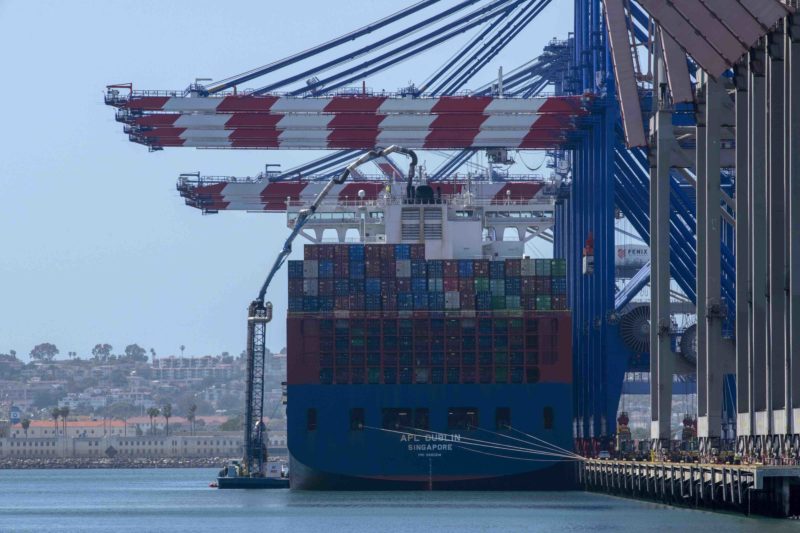
Shipping companies receive recognition and financial awards based on the percent of distance traveled by their vessels through the Vessel Speed Reduction (VSR) zones at 10 knots or less and with an average speed of 12 knots or less. The 10-knot target complements the National Oceanic and Atmospheric Administration’s (NOAA) and U.S. Coast Guard’s requests for all vessels (300 gross tons or larger) to reduce speeds during the months of peak endangered blue, humpback, and fin whale abundance to protect these whales from ship strikes.
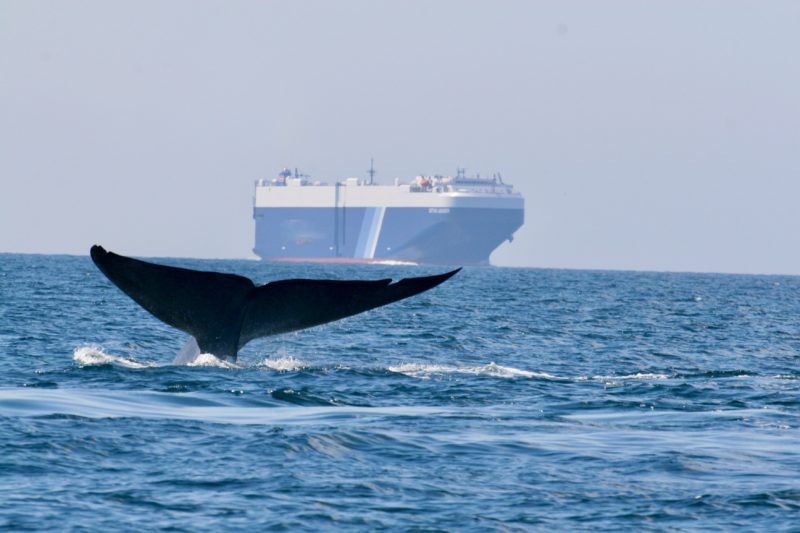
Ship strikes are a major threat to whales globally and to the recovery of endangered blue, fin, and humpback whales in California waters. Reducing the risk of ship strikes is a major priority of NOAA’s, including NOAA’s West Coast national marine sanctuaries. Observed and documented deaths totaled 51 endangered whales from 2007-2021, and likely represent only a small fraction of the total number of ship strikes taking place annually.
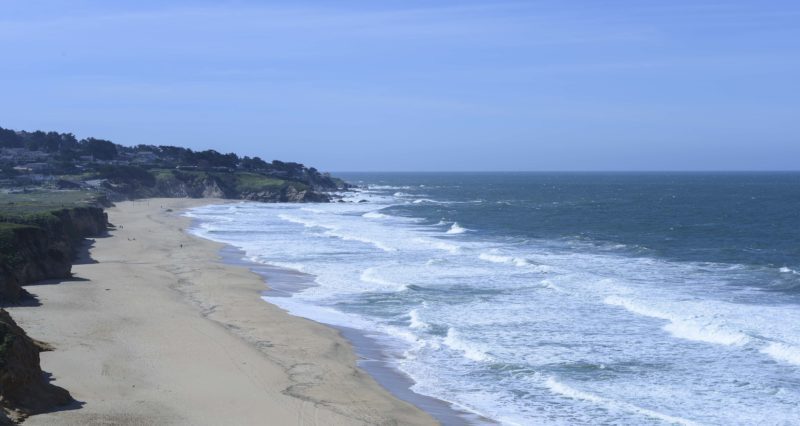
The timing of the program also coincides with the season when ground-level ozone (smog) concentrations are typically high. The 10-knot target allows ships to travel at an efficient operating load using less fuel and producing less pollution. Ocean-going vessels transiting the California coast generate nitrogen oxides (NOx, a precursor to smog), sulfur oxides (SOx), particle pollution, and greenhouse gasses (GHGs). These vessels account for nearly 200 tons of NOx per day emitted off the coast of California, which affects ozone levels onshore in many regions of the state. The areas of greater Los Angeles (including Ventura County), Santa Barbara County, and the San Francisco Bay do not meet the state and/or federal air quality standards for ozone.
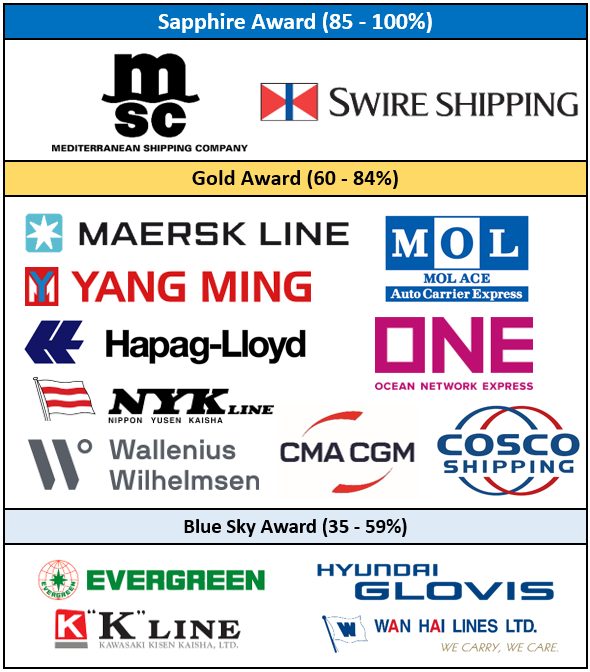
Three award tiers recognize participating companies based on the percent of distance their fleet traveled through the VSR zones at speeds of 10 knots or less. The three award tiers are Sapphire (85-100% of fleet total distance in VSR zones traveled at 10 knots or less), Gold (60-84%), and Blue Sky (35-59%). Automatic Identification System (AIS) transponders on each ship transmit the ship’s speed and location; AIS data was analyzed for each fleet and the company’s performance was classified by tier. Companies that performed at the Gold or Sapphire level were awarded a financial incentive.
For the fourth year in a row, Mediterranean Shipping Company (MSC) notably achieved the Sapphire tier in the large fleet category and demonstrated that planning enables ships to reduce speeds in VSR zones without disrupting operations. In 2021, MSC traveled more than 23,000 nautical miles at 10 knots or less. Swire Shipping achieved the Sapphire tier in the small fleet category with 1,500 nautical miles at 10 knots or less. For their outstanding commitment, these two companies earned the Protecting Blue Whales and Blue Skies Whale Tail award.
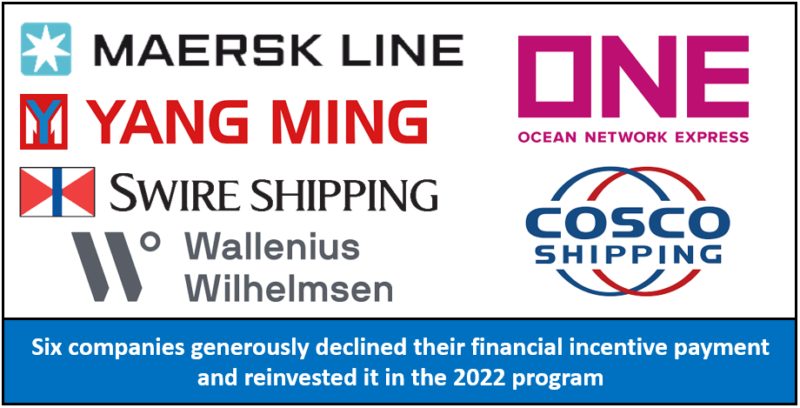
Six companies – COSCO Shipping Lines, Maersk, Ocean Network Express (ONE), Wallenius Wilhelmsen, Yang Ming, and Swire Shipping – generously declined their financial incentive payment. Those funds will be used for additional public recognition efforts and reinvested in the program.
The VSR incentive program has expanded in scope and environmental benefits each year, including 2021, which marked the seventh year. Highlights of the 2021 program include:
The program is a collaborative effort by Santa Barbara County Air Pollution Control District; Ventura County Air Pollution Control District; Bay Area Air Quality Management District; Channel Islands, Cordell Bank, and Greater Farallones national marine sanctuaries; The Volgenau Foundation; California Marine Sanctuary Foundation; National Marine Sanctuary Foundation; Greater Farallones Association; Environmental Defense Center; Point Blue Conservation Science; Starcrest Consulting; and Scripps Whale Acoustic Laboratory/Scripps Institution of Oceanography.The 2022 program runs May 1 through December 15, 2022. For more information, visit www.bluewhalesblueskies.org.

Sign up for gCaptain’s newsletter and never miss an update

Subscribe to gCaptain Daily and stay informed with the latest global maritime and offshore news


Stay informed with the latest maritime and offshore news, delivered daily straight to your inbox
Essential news coupled with the finest maritime content sourced from across the globe.
Sign Up